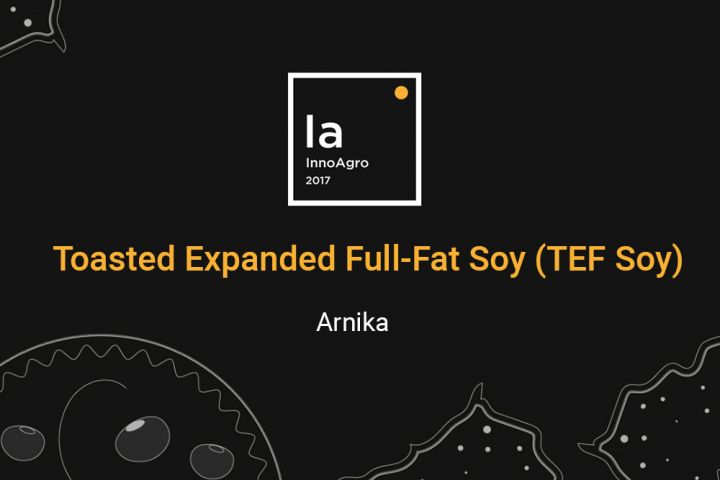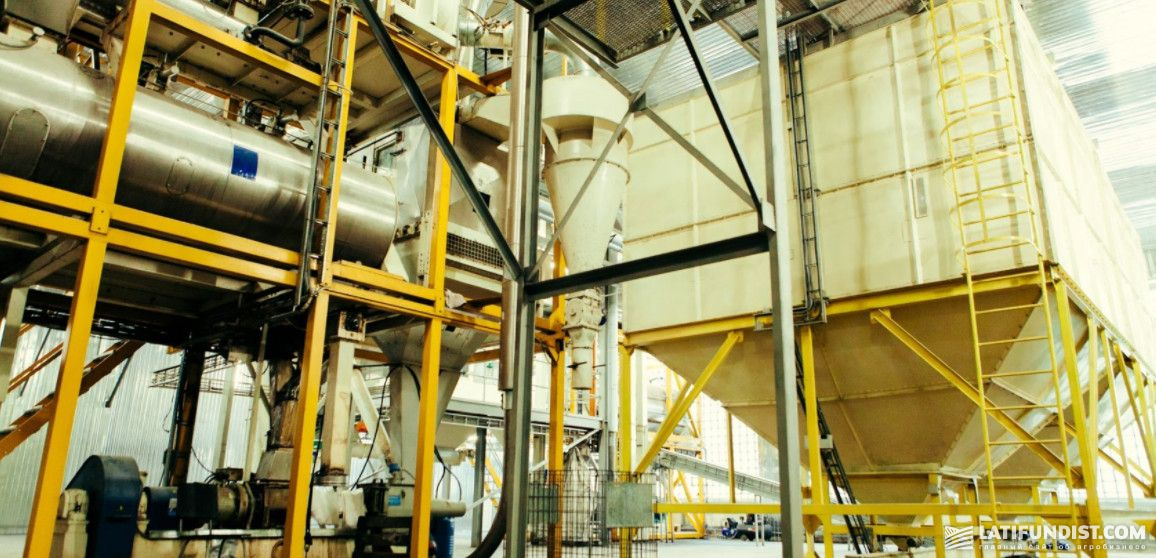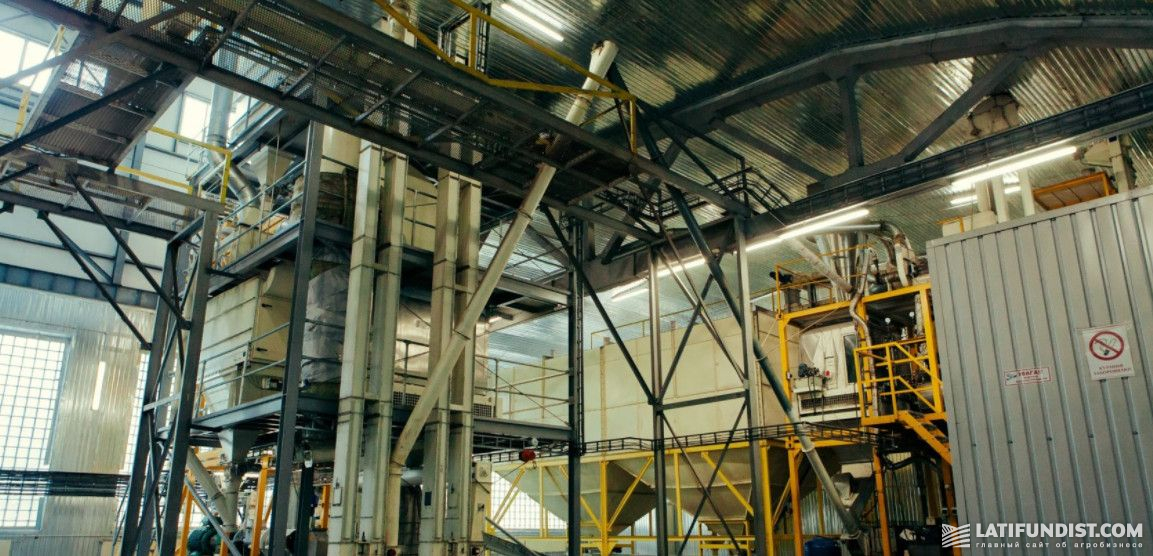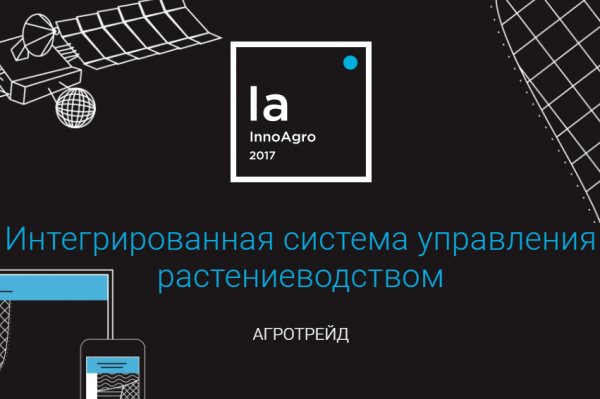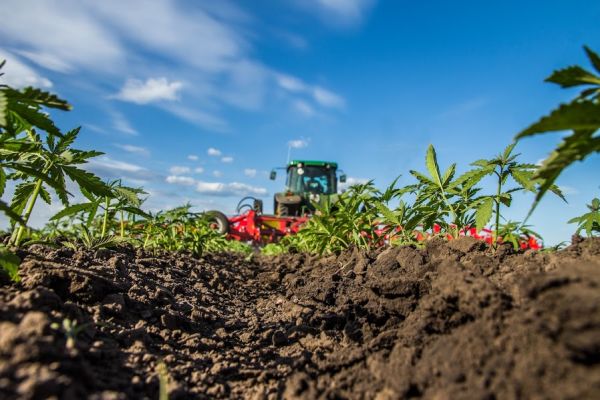Toasted Expanded Full-Fat Soy (TEF Soy)
In agribusiness, the word "organic" is associated with a small farm, which sells a small amount of niche products grown using old technologies. In order to increase productivity holdings for most often use the latest scientific achievements — growth stimulants, phosphatides, azo bacterins, natural acids.
In such conditions, the industrial production of organic feeds, which possess high nutritional properties with practically no chemical additives, seems absolutely unreal.
However, there is a technology where the absolute opposites combined — organic and technological. We are talking here about toasted expanded full-fat soybean.
Soybeans — Useful and Cunning
Soy contains 35-40% of valuable vegetable protein, with the properties closest to the animal protein. In addition, it contains the elements necessary for animals — lecithin, all microelements, B vitamins, fats — which makes it a valuable raw material for animal feed.
At the same time, raw soybeans can not be used as food: they contain natural antinutrients — trypsin inhibitors, indigestible carbohydrates, allergens that prevent the soy proteins and other useful elements from being absorbed by the animals.
The trypsin inhibitor is the most dangerous antiferment, a substance that suppresses the process of the trypsin enzyme production by the pancreas and blocks its activity.
As a result, the presence of trypsin inhibitors in feeds in the native (non-inactivated) form causes animal pancreatic hypertrophy, acute and massive digestive disorders, which significantly inhibit their growth and development, causes an abnormally large shortage of sulfur-containing amino acids, and leads to frequent death of livestock, especially young animals.
The protective mechanisms of soybeans can be neutralized by heat treatment. However, this process is rather complicated — if the heat treatment is insufficient, the anti-nutrients will remain active, and in case of excessive heat exposure, the nutritional value of soy will drop dramatically and its undeniable benefits will be lost. The treatment regime should be optimal with the soft denaturation of proteins while preserving all essential amino acids in an accessible form. At the same time, such treatment should be sufficient to completely neutralize the activity of anti-nutrients, and to obtain a pleasant smell and taste.
It is not easy to reconcile these requirements. Many techniques for soybean processing have been developed now.
They include dry and wet extrusion, micronisation, barohydrothermal heating in special boilers. However, these methods have one significant disadvantage — in the process of neutralizing negative factors, a significant part of nutrients are lost as a result of rigid heat treatment.
Soybean Processing: the Most Widespread Technologies
Historians believe that soy was known in Asia several thousand years before our era. It was used both for human food and animal feed. This crop became known to the Europeans much later — presumably in the 17th century — due to the German traveler and naturalist Engelbert Kaempfer.
The main European popularizer of soy was Frederick Haberland, who in 1873 received seeds of 19 varieties of soybeans at the Vienna World Exhibition. The soybeans were imported to North America almost a century later, in the middle of the 18th century. But it was in the USA that it became the "golden bean" — one of the most important agricultural crops of the country. This largely determined the further development of the mixed fodders world market.
For a long time, soybean trypsin inhibitors were deactivated by frying or quenching — huge braziers were used. But in this case, the influence of the human factor is too big — it depends on the operator's skill whether the product will be sufficiently fried to destroy the trypsin inhibitors and not be overcooked, which could result in the protein denaturation.
Protein denaturation is a change in the native (natural) conformation of the protein molecule under the influence of destabilizing factors, which leads to the loss of protein natural properties (solubility, hydrophilicity, etc.). Denatured protein is basically not digested by animals.
Besides, the soybean oil, subjected to heat treatment, oxidized very quickly, which made it impossible to store and transport the finished product for a long time. Over time, this technology has been supplanted by more progressive ones.
The lion's share of the mixed fodder market today is occupied by oil meal — a by-product of the oil extraction industry, which remains after the extraction of oil with hexane. The world production of soybean meal is about 230 million tons, the main exporting countries are Argentina — 33 million tons, Brazil — 16 million tons, the United States — 11 million tons.
The main advantage of the meal, which made it so popular in the world is a long shelf life (up to 6 months), which makes it possible to ship it even overseas. But along with oil, fat-soluble vitamins are removed from the meal, the digestibility of the protein is low, 0.2% of hexane remains in the meal. Therefore, the use of meal as part of mixed fodders is impossible in organic production.
Hexane is saturated hydrocarbon C6H14, a solvent that is a part of gasoline. If consumed internally, it damages the lungs, acts as a narcotic substance, causes damage to the peripheral nervous system and suppression of the CNS. Hexane is bitter and the feed containing this element is poorly consumed by animals, requiring special additives covering the specific smell and taste. For example, an adult pig, along with feed meal based on oil-meal, can get a tablespoon of hexane per day. The uterine stock suffers especially.
The remaining 8-9% of the market is occupied by oilcake, which is a product of the fat and oil industry, obtained as a result of pressing the oilseeds. More oil in the amount of about 7-10% remains in the oil cake.
At the same time, short-term heat treatment does not guarantee the absence of pathogens, complete neutralization of anti-nutrients can not be ensured, and an uncontrollably high level of urease is potentially hazardous to animal life, especially with high levels of urea in the feed.
According to Viktor Timchenko, President of the Ukrainian Association of Soy Producers and Processors, the transformation of soybeans into forage is a complex and scientifically intensive process. Apparently, as a result, only about 600-800 thousand tons or 25% of the gross production volume is processed in Ukraine. With the current volumes of livestock and poultry products manufacturing, it is necessary to use at least 1.2 million tons of soy products. Therefore, despite large yields, soybean meal and soy protein concentrate are imported to Ukraine.
But, according to the latest achievements of science and practical observations, it is necessary to use specially prepared forages instead of byproducts of processing (meal and cake) in animal feeding.
TEP Soy: Three Steps from Harmful to Useful
Taking into account all the shortcomings of the existing feedstuffs based on cake, the Dutch scientists developed an innovative technology that was later substantially modified by specialists of Arnika Agricultural Holding under the guidance of the company CEO Andrey Pylypchenko. This is the production of the toasted expanded full-fat soybean (TEF soybean).

The technological process involves three consecutive technological operations. First, the shell is removed, the grain is ground and processed with steam for 10 minutes at the temperature of 100-103 °C. After that, the raw material enters the toaster for 8-10 minutes to neutralize the anti-nutrients at the temperature of 85 °C. The next stage is expander.


There, the products are compressed to 20 atmospheres and are sharply released. This breaks the molecular bonds.
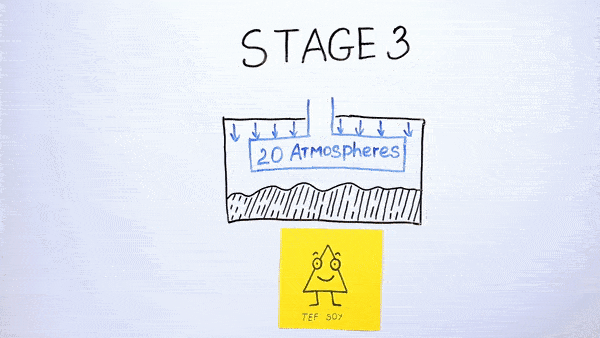
In the process of mixed fodders preparation, the use of toasted expanded full-fat soy solves the problems of energy and protein balance. American scientists have proven that oil, extracted from a destroyed plant cell is rapidly oxidized. Therefore, it is appropriate to use raw materials from which no vegetable oils have been extracted.

During extrusion, lipase and lipoxygenase enzymes are inactivated, which affects the speed of the oxidation process, so the shelf life of TEF soybean reaches 6 months.
Oil is not extracted from TEF soybean, so feed intake, even in small quantities, brings the amount of energy which lacks during the use of soybean meal, oil cakes, which must be compensated by adding fat in its pure form. TEF soy provides a natural ratio of essential amino acids with energy of oil, which is expressed in the maximum energy value, necessary for feeding all the main types of farm animals, poultry, fish. Not all equipment, presented on the market, can dose and mix pure fat admixtures, especially mini-fodder equipment. It is also a financial burden of the additional equipment purchase. The introduction of TEF soybeans into the compound feed formula ensures high resistance of granules, reduces the level of dust and equipment wear, improves the appearance and taste of feed. During the preparation of such a feed, equable mixing and distribution of the ingredients takes place. Also all the useful vitamins and amino acids remain in this product.
Unlike soybean meal, there is no residual hexane in TEF soy, which is used in the oil extraction and can cause a decrease in feed consumption and a number of diseases in animals and poultry. TEF soy is particularly effective in poultry farming.
Feeding diets in poultry farming have some peculiarities — it is a strict control of the ratio of protein and energy. If the energy content is too high, consumption will decrease and there will be a protein deficit, which makes it complicated to realize the poultry genetic potential and often leads to its obesity.
If high protein feed has low energy level, it will result in the unproductive burning of the protein to produce energy. To ensure normal livelihoods and high productivity, the growing young should receive not only a sufficient amount of protein in the diet, but also a sufficient amount of energy, and also the certain content and ratio of irreplaceable amino acids. The balance of diets for protein, energy and amino acid nutrition is achieved by including the full-feed TEF soybean feeds. This is due to the high digestibility of protein and the final economic efficiency. The protein digestibility reaches 90% or more in the organic TEF soy. Some Ukrainian poultry farmers have already appreciated the benefits of TEF soybean. When using it in mixed fodders, the feed costs per 1 kg of live weight are reduced by 15%, the average daily weight gain increases by 20%, and the feed consumption improves.
TEF soybean is characterized by good flowability. In addition, it is completely deprived of pathogenic microflora, has a pleasant smell and taste, which improves the feeding process.
"TEF soy is a universal protein product that can significantly change the process of feeding animals, poultry, fish towards the ideal balance of rations."
The experience of including TEF soybean in animal and poultry diets indicates that it is well combined with any grain composition.
High protein digestibility and significant concentration of essential amino acids in TEF soy brings it closer to animal feeds (fishmeal, milk powder) and is able to replace them partially and even completely in any rations of feeding of farm animals, birds, fish.
TEF soy can be introduced into the ration of piglets of the pre-start period (10% of the weight of the mixed feed), starters (15-20%), for suckling sows (17% of the weight of the mixed fodder). For cattle this ration makes 1 kg per cow, for calves — 20% of the weight of mixed fodder, or fish it makes up to 40%, depending on the family. The effective proportion of TEF soybean in the rations of meat poultry is up to 30%, depending on the age, for egg poultry — up to 25% of the weight of the mixed fodder.
With the inclusion of TEF soybean in the mixed fodders recipes, the net price is 15% lower compared to soybean meal, cake.
TEF Soybean Mathematics
Why is TEF soy economically profitable? When buying a meal or cake, the agrarians are primarily interested in two components: protein and fat. Let's compare economic expediency of purchase of TEF soybean in comparison with meal (as the most widespread product in the market). The meal contains about 45% protein and 2% fat. In TEF soybean these indicators are 37% and 20% respectively.
TEF Soy Plant
The only plant in Ukraine producing TEF soy, certified for organic production, is located in the town of Globino, Poltava Region. The enterprise with a capacity of 7 tons per hour belongs to the agri-industrial group Arnika.
The plant has been operating for 2 years already, all equipment is Dutch. The plant has its own auto-receiving line and railway shipment. The products have proved themselves to be high quality, many consumers have felt the benefits of TEF soybean compared to soybean meal and cake. TEF soy is popular in Ukraine as well as in the EU countries and Belarus.
“The main feature of this feed is that being used regularly, it increases the profitability of livestock production compared to the use of other feeds. Everything starts with a pleasant smell and taste. This immediately improves the feeding process. However, the main thing is high caloric content, high digestibility of fats, content of basic fatty acids, lecithin and good granulation ability,” this is the way deputy plant director Anatoly Marchenko explains the growing demand for TEF soybean.
The logistics component at sale to the European countries is too high and does not allow to compete with the Latin American soy at the moment.
In addition, ASF in Poltava region resulted in banning imports to Belarus. Therefore, the products are currently not exported. But this does not mean that we are being passive. We are actively working on presenting our product in European countries, but they mostly expect us to export the soybeans as raw materials for processing. We are confident that our product will have an advantage in high-tech agricultural production.
The TEF soy can be safely stored for half a year without losing its useful properties. At the moment, the cost of products is 13,350 UAH per ton. Remember, we were talking about organic production at the beginning of the article? We would like to inform, that the TEF soybean plant in Globino has the international certificate Organic Standard. In the opinion of the surveyed experts, the meat grown on feed, which contains the organic TEF soybean, is ecologically safe and meets the high standards of organic products quality.
There exists a big difference — there is soy, which is added to meat products by almost all producers; whereas there is feed based on soy. It can be useful or harmful for the meat composition depending on the type of treatment.
Such feed as TEF soybean, where soybeans are grown in accordance with the requirements for organic products and are not genetically modified, opens up entirely new possibilities for organic agribusiness.
Now, the term "organic" can turn from a narrow, niche concept into a whole direction or even a philosophy of a completely different production and consumption. Perhaps in the near future we will be able to talk about the emergence of a new generation of agriholdings, which produce exclusively organic products. This can be the future direction of agribusiness development — a harmonious combination of the organic way of life and the latest technologies.

